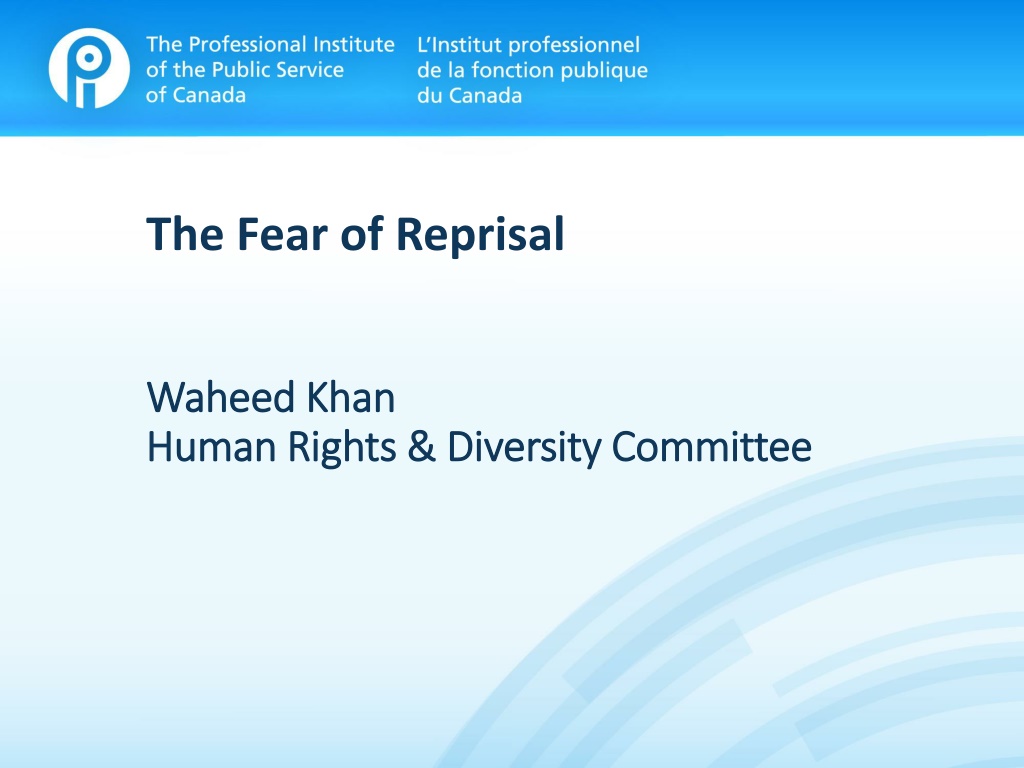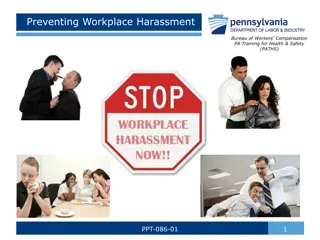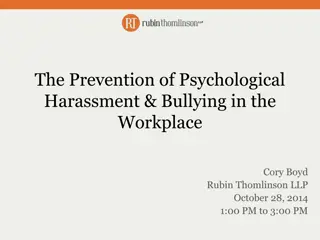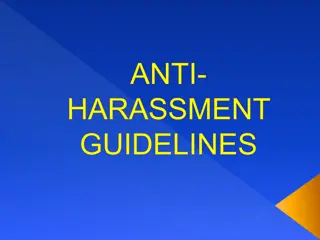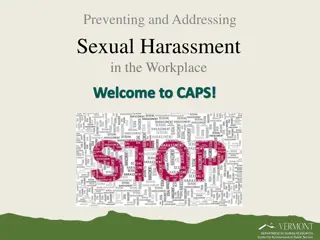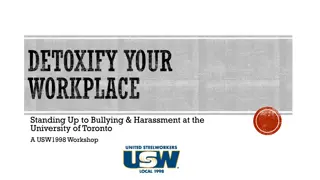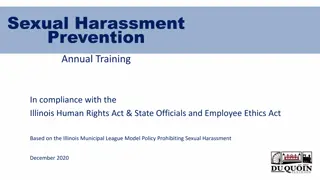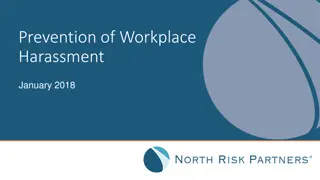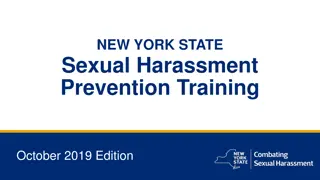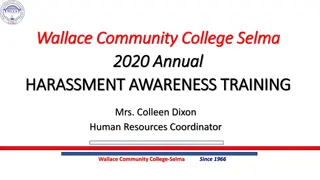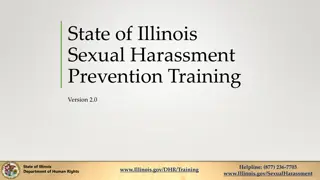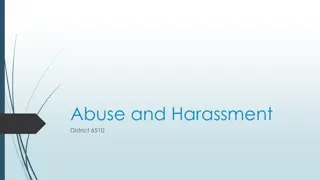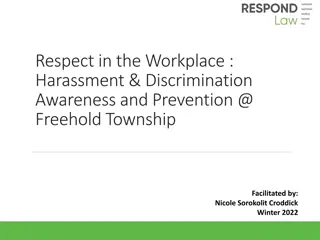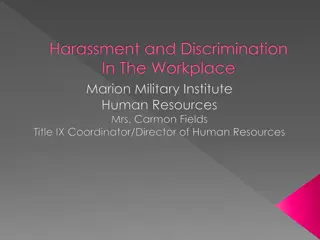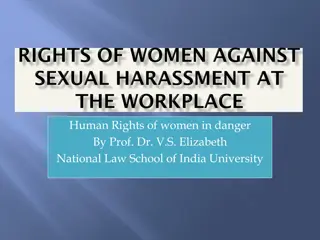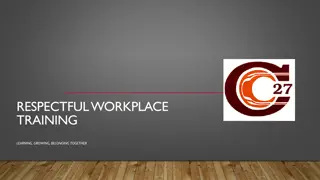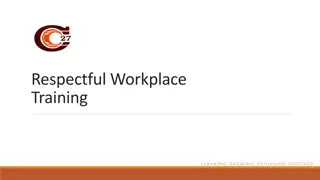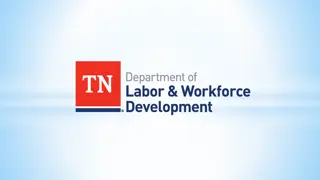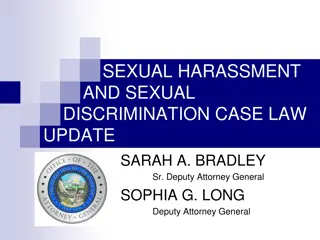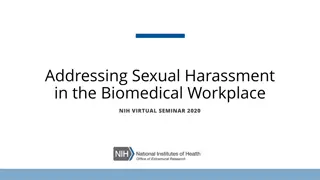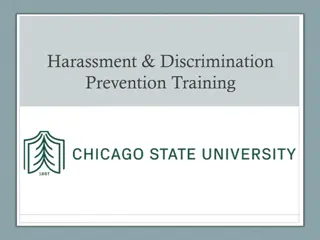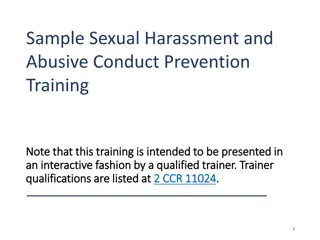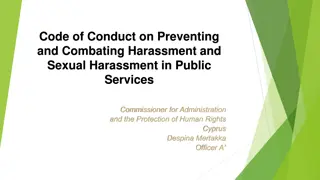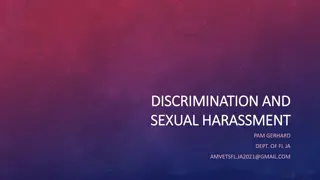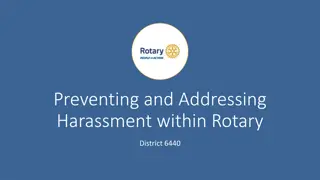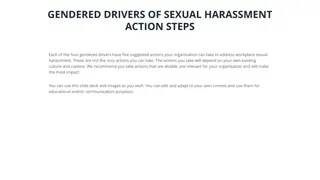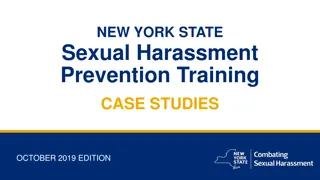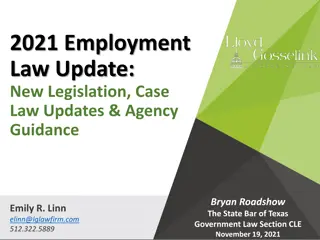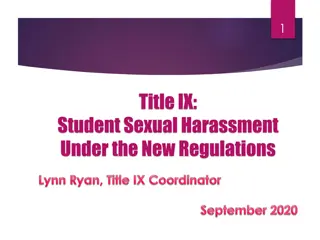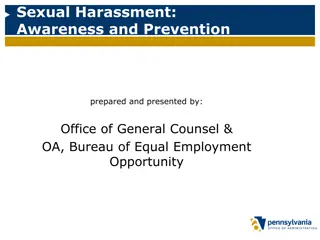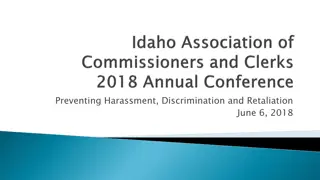Addressing Workplace Harassment: Creating Safe and Respectful Environments
Public servants have the right to work in environments free from harassment. Despite this, many cases go unreported due to fear of reprisal, lack of support, and uncertainty about the reporting process. It is crucial for organizations to encourage open dialogue, provide support for victims, and hold perpetrators accountable to foster a culture of respect and safety in the workplace.
Download Presentation

Please find below an Image/Link to download the presentation.
The content on the website is provided AS IS for your information and personal use only. It may not be sold, licensed, or shared on other websites without obtaining consent from the author. Download presentation by click this link. If you encounter any issues during the download, it is possible that the publisher has removed the file from their server.
E N D
Presentation Transcript
The Fear of Reprisal Waheed Khan Waheed Khan Human Rights & Diversity Committee Human Rights & Diversity Committee
Safe Workspaces: Starting a dialogue and Safe Workspaces: Starting a dialogue and taking action on harassment in the Public taking action on harassment in the Public Service Service Public servants have the right to work in an environment where they are treated with respect, dignity and fairness Have open and honest conversations about the types of workplaces you want Where are we getting it right, and where are we falling short? What approaches make the most sense for your department or agency? 2
Public Service Employee Survey 2018 15% of public servants indicated that they have been the victim of harassment on the job in the past year This number can be much higher for specific groups. For example, members of some employment equity groups, and employees in specific operational roles are more likely to indicate they have been harassed Unacceptable behaviours range across a spectrum from incivility, bullying and intimidation to sexual harassment and forms of physical violence 3
Most cases of workplace harassment are never reported It is difficult for victims of any form of harassment to come forward Victims may not know who to turn to, do not always feel safe, and, in many cases, fear reprisal Employees lose confidence in the harassment response process when there are no visible consequences for harassers, and employees lose trust that complaints will produce meaningful corrective measures Managers need to feel that they have the support of their leadership as they work to foster a culture of respect in their teams, and to intervene when incidents of harassment arise 4
Victims are hesitant to come forward with harassment complaints for a number of reasons: They don t believe it would make a difference They don t know how to begin the process They think that the harassment they are exposed to is not bad enough They are concerned about what can be a lengthy, arduous process They fear reprisal or social repercussions 5
26th Annual Report to the Prime Minister on the Public Service of Canada Harassment is now an agenda item at every meeting between management and Public Service unions Our focus on improving our workplace over the last number of years seen in our hard work on diversity and inclusion, mental health, and harassment, as well as our experimentation with new ideas has given momentum to renewal We made important strides through open dialogue to address mental health and wellness and to tackle harassment and discrimination. In line with this, we have supported legislative reforms, including: Bill C- 65, which addressed harassment; the Pay Equity Act; the Accessible Canada Act (Bill C-81) 6
